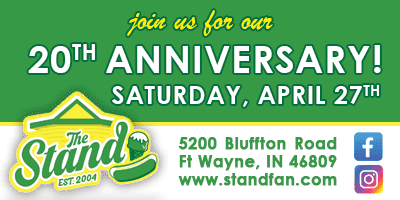THE INTERURBAN-ITS BOOM AND BUST PART VII
At the turn of the 20th century all segments of Indiana’s economy rapidly expanded because of the interurban! The copper, steel and heavy metal industries especially benefited from the construction and maintenance of interurban lines. Thousands of miles of copper wires were strung. Steel rails, trucks, frames and, after the price of wood increased, manufacturers started making the complete interurban car out of steel.
In my estimation, however, the greatest spin-off of the interurban industry was the electrification of the Midwest. Generating stations were built in almost every community and transmission lines extended to substations along the interurban line where rotary converters were located to supply 600 volt D.C. power to the trolley lines. You see, it really wasn’t the REMC who turned on the lights in the country. It was the electric interurban. Without the patulous transmission network to supply the interurban, there would’ve been no readily available power source for the REMC distribution systems.
Progress is relentless and unforgiving. Just as the railroads replaced the canal barge lines, the interurbans, for one brief shining moment, cut deeply into the railroad passenger business. Ironically, many of the early interurban tracks were laid on towpaths for the old canal system. The automobile, motorbus and truck then replaced the interurban and there are now ribbons of concrete running over portions of the abandoned electric railroad right-of-way. The past two generations have witnessed probably the greatest changes in transportation in recorded history. Will it be better, perhaps, but maybe not?
Jack Stark, born in Indianapolis, Indiana was raised in Fort Wayne. He attended Notre Dame, Rice and Purdue Universities, receiving an electrical engineering degree. His college career was interrupted by a stint as an officer in the Navy during World War II. He joined Indiana Michigan Electric Company upon graduation, advancing to the position of senior vice president and chief operating officer before his retirement in 1986. He has served as president of Fort Wayne’s Quest Club and on many community and church boards, frequently as president. He passed from this world on September 2001. His presence is sorely missed by our community, his family and many friends. Jack was a mentor to many young people in Fort Wayne.
When The Waynedale News contacted Jack’s widow Mary, concerning this article, she said, “Jack often commented, how nice it was during his younger years to board an electric interurban car in downtown Fort Wayne, and an hour later arrive in downtown Indianapolis.” Jack told Mary that he usually read a newspaper or book on his trips to Indy and arrived there rested and relaxed. And, on his return trip to The Fort he usually took a nap; try that while driving on Interstate 69.
With todays ever-increasing fuel costs, air pollution, traffic congestion, and a stagnating economy it is cause to wonder why Indiana’s business and political leaders are not seriously considering a modern mass transportation system for Indiana. Our business and political leaders need only to understand that the last year the interurban existed (1941), 40 million people and their money rode it to places where they could spend it. Steel wheels on ball bearings, rolling on steel rails, powered by hydro-electricity were as efficient as mass transportation can get! Economic growth and prosperity are very much dependant upon its people’s mobility. Without a modern, mass transit system, Indiana’s economy, and working, retired and handicapped citizens will continue to suffer dire consequences.
by JES
- Celebrating 20 Years Of Community At The Stand - April 12, 2024
- First Positive Case Of Chronic Wasting Disease In Indiana - April 12, 2024
- Southwest Allen County Schools Embark On Major Tree Plantings - April 12, 2024


